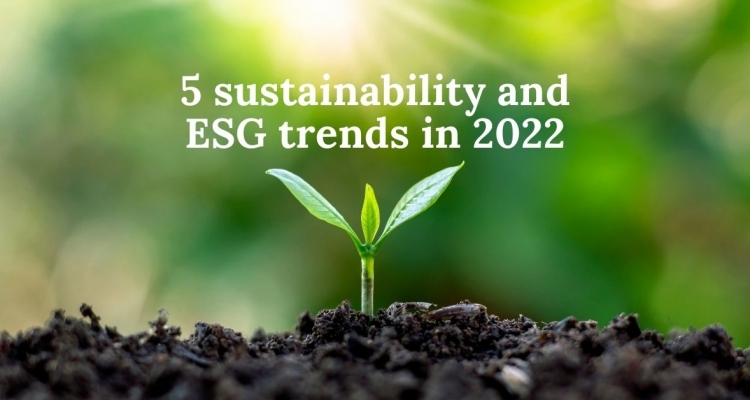How was 2021 for sustainability and ESG? And what are the trends for this year? This article focuses on the top 5 trends to watch out for in 2022.
1. ESG and responsible investing
Today’s investors focus on ESG investing benefits and naturally expect ESG reporting. It is expected, that the quality and quantity of ESG data will be improving as reporting requirements and expectations are constantly growing. Responsible investors are encouraging companies to address issues that impact workers, customers, local communities, and the environment.
2. Focusing on the 'social' in ESG
Social issues, such as diversity and inclusion, or labour rights, will be further discussed in 2022. We also expect investors seeking to minimize the risk that societal factors impose to long-term investments.
Showing a preference for companies that pay attention to the social issues can be a way for investors to reflect their values in investing and also leading to higher and more reliable returns over the long term.
3. Net-zero commitments and the role of offsets
More than 600 companies worldwide have already committed to reach science-based net-zero before 2050 through the Science-based Target Initiative (SBTi) Business Ambition for 1.5°C campaign.
Carbon offsetting represents compensating carbon emissions through carbon offset projects that are reducing carbon emissions elsewhere. Although the primary focus for companies should remain on huge and fast reductions in their carbon emissions, offsetting is still seen as a key part of the overall net-zero commitment in 2022.
4. Scope 3 emissions
More and more companies set ambitious emission reduction targets. It is crucial that they are able to measure and reduce greenhouse gas (GHG) emissions associated with their value chain.
The carbon emissions produced by a company are divided into three main categories. The Scope 3 category includes "other indirect emissions" that result from the activities of the company, but outside its main operations. These are for example purchased raw materials, services, business travel, waste, etc. Scope 3 emissions are often by far the largest proportion of an organisations’ carbon footprint. However, this category of emissions is also the one over which businesses have the least control and have the biggest difficulty quantifying. As knowledge, processes and best practice continue to develop, we will witness a huge increase in the coverage and accuracy of scope 3 data.
5. Supplier Diversity, Equity & Inclusion
The importance of diversity, equality and inclusion in the corporate environment is growing. Demand for transparency in this area from stakeholders have also increased and this trend will continue in 2022. Emphasising diversity within supply chains can increase their resilience and adaptability, which proved crucial during the Covid-19 pandemic.
What does this mean for investors and companies?
In both cases, there will be increased requirements to understand, assess and measure ESG criteria, not only in the operations and functioning of companies, but also in investments and portfolios. There will also be increased requirements for the collection, management and reporting of ESG data.
As the sustainability and ESG becomes very important for investors and businesses and also the pressure to achieve net-zero is growing, 2022 is expected to be the strongest year for ESG yet.

